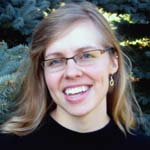Health and safety regulations pose a challenge
Despite this record, fitting NSPs into the framework of local governmental health and safety regulations could pose a challenge in Canada and the United States. Europe already has set standards and best-practice models in place, but North America has nothing quite like a public NSP at this point in time. To fall under existing codes, it might be helpful to regard a public NSP as similar to a public beach, which is perhaps their closest cousin in current regulations.
It is quite feasible that a public NSP at Borden Park could be considered using the same codes that apply to public beaches under Alberta regulation 243/2003, Nuisance and General Sanitation Regulation. This regulation sets the minimum water quality standards for operation of a beach or constructed beach (e.g. Summerside Lake, a constructed beach near Edmonton, follows these regulations).
Though NSPs function in place of traditional pools, it is important to remember these systems are, in actuality, ponds that function as natural ecosystems. As such, they are more correlated to beaches and other natural bodies of water that are used as public swimming areas deemed safe by local governing and health authorities.
The difference lies, however, in the NSP’s design and construction, which optimizes its cleaning potential and water quality by combining natural processes with scientific knowledge and technology. If they were compared in this manner, it would be easy to make the case for NSPs, as they are held at (and easily meet) higher water quality standards than those of public beach codes in North America.
The workings of a natural swimming pond
Rather than using chemicals for sanitization, water in a NSP is purified naturally as it moves through filters, and by the biological functioning of plants and micro-organisms. The most modern and effective construction method consists of two separate bodies of water—a swimming zone and a regeneration zone—which co-operate to create a living ecosystem that keeps the water clean.
The regeneration zone is characterized by plants rooted in gravel substrate, which is a key ingredient in the water purification process. First, water exits the swimming area through skimmers, similar to a swimming pool, then flows into biological fine-filters, which collect larger debris and particulate matter. The water continues to flow, via gravity, into the regeneration zone where it passes through layers of gravel substrate. Finally, a circulation pump draws water out of the regeneration zone and returns it to the swimming zone.
The concept of the regeneration zone is essentially what allows a NSP to function. In this zone, biological principles are at work breaking down undesirable components in the water, transforming them into nutrients for plants.
Water flow is naturally an important component of the biological system and has an important role in the pool’s ecological sustainability. Water circulation rates of a NSP are much slower than those of a traditional swimming pool, resulting in greatly decreased energy consumption.
It is also important to note that soil of any sort is absent from this system. This forces plants and microbes to get all required nutrients from the water. In fact, they are competing for the same nutrients that would otherwise feed algae growth. As a result, this makes the NSP a balanced ecosystem where all plants, micro-organisms and introduced nutrients are interrelated.
NSPs function optimally when all biological factors are present in the correct ratios. The stability of the system increases over time.
A model for future North American projects
While there are more than two decades of experience in public NSP design, construction and operation in Europe, a project of this kind in Edmonton would mark the first in North America. Despite this, there are no foreseeable roadblocks from a climatological, technical or health and safety standpoint. The possibility of a public NSP presents a unique opportunity for Edmonton, and Borden Park would be an optimal setting, given that the city can come up with the means and public support for construction.
Currently, city administration is working with Alberta Health Services to establish water quality standards that would make a NSP viable. The city has also submitted the project profile into the capital budget process to secure funds and identify it as a priority in the capital plan. Should the project receive approval for further design and construction, it could become a model for future public NSPs throughout Canada and the United States.
 Kara E. Smith joined BioNova® in 2010 after graduating from Cornell University with a degree in landscape architecture. She is involved in all marketing and technical aspects of the business, from hosting webinars to writing technical presentations on natural swimming pools (NSPs). She can be reached via e-mail at kara@bionovanaturalpools.com.
Kara E. Smith joined BioNova® in 2010 after graduating from Cornell University with a degree in landscape architecture. She is involved in all marketing and technical aspects of the business, from hosting webinars to writing technical presentations on natural swimming pools (NSPs). She can be reached via e-mail at kara@bionovanaturalpools.com.






